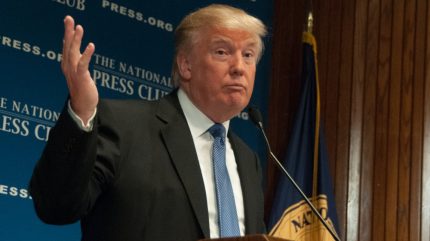
President Donald Trump’s aggressive tariff strategy in 2025 has introduced significant volatility into global markets, leaving investors, businesses, and policymakers grappling with a landscape marked by unpredictability and economic strain.
Shifting signals and inconsistent exemptions
In a surprising move, the Trump administration recently announced temporary exemptions for consumer electronics, including smartphones and laptops, from new tariffs on Chinese imports.
This decision provided short-term relief to tech companies like Apple, whose stock surged over 7% in early trading following the announcement.
However, the relief was short-lived as President Trump later suggested that these products might still face a 20% levy under a different category, linking them to fentanyl-related policies.
The administration’s inconsistent messaging has led to confusion among businesses and investors. While some officials emphasized the temporary nature of the exemptions, others downplayed them, creating uncertainty about the future of these tariffs.
This lack of clarity complicates supply chain planning and investment decisions for companies heavily reliant on Chinese manufacturing.
Economic repercussions and market volatility
The broader economic impact of the tariffs is becoming increasingly evident. Analysts warn that despite partial exemptions, consumers could still face higher prices, and companies may incur significant costs due to supply chain adjustments.
Apple, for instance, manufactures over 80% of its products in China, making it particularly vulnerable to supply chain disruptions.
Financial markets have responded with volatility. While tech stocks like Apple experienced temporary gains, broader market indexes have seen fluctuations as investors react to the uncertain trade environment.
Bond yields have also dropped, reflecting renewed investor caution. The 10-year Treasury yield fell by 8 basis points, indicating concerns about long-term economic growth.
Internationally, the tariffs have strained relations with key trade partners. The European Union, for example, has expressed strong opposition to the tariffs, with leaders threatening retaliation and criticizing the U.S. approach to trade policy.
Such tensions risk escalating into broader trade disputes, further destabilizing global markets.
Undermining strategic economic goals
Critics argue that the tariff policy contradicts the administration’s stated economic objectives. While President Trump claims that tariffs will boost domestic manufacturing and economic growth, economists suggest the opposite may be true.
Tariffs are essentially taxes on imports, which can lead to higher prices for consumers and increased costs for businesses. This dynamic could dampen consumer spending and investment, ultimately slowing economic growth.
Moreover, the tariffs may hinder competitiveness in strategic industries. For instance, proposed tariffs on semiconductors could disrupt the tech sector, which relies on complex global supply chains.
Such disruptions could impede innovation and weaken the U.S. position in critical areas like artificial intelligence and advanced manufacturing.
The policy also risks eroding international influence. By imposing tariffs on allies and adversaries alike, the U.S. may be encouraging other countries to seek alternative trade partnerships, potentially diminishing its role in the global economy.
This shift could have long-term implications for U.S. economic leadership and geopolitical standing.
The takeaway
President Trump’s tariff policy has introduced a level of uncertainty that complicates economic planning and investment. The inconsistent application of tariffs, coupled with mixed messages from the administration, has left markets in a state of flux.
While intended to protect domestic industries and promote economic growth, the tariffs may instead be undermining these goals by increasing costs, disrupting supply chains, and straining international relations.
As the situation evolves, businesses and investors will need to navigate this complex landscape carefully, balancing short-term challenges with long-term strategic considerations.
Navigate the shifting tariff landscape with real-time data and market-leading analysis. Request a free demo for GlobalData’s Strategic Intelligence here.




